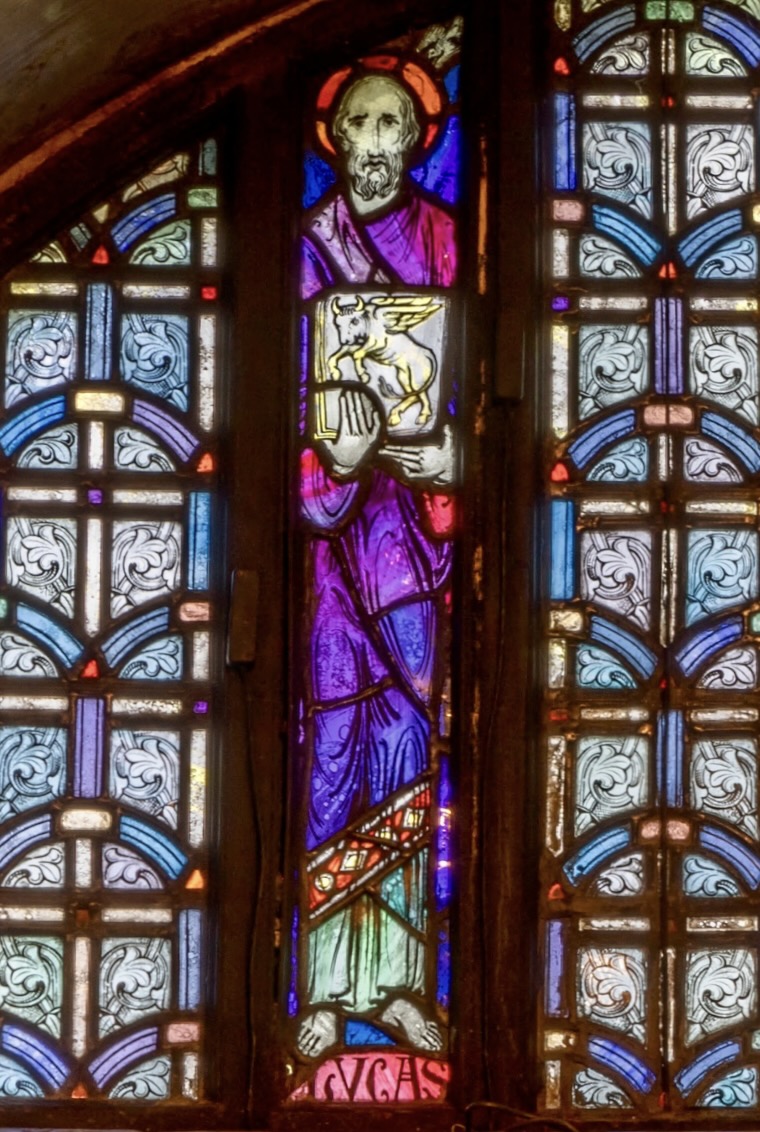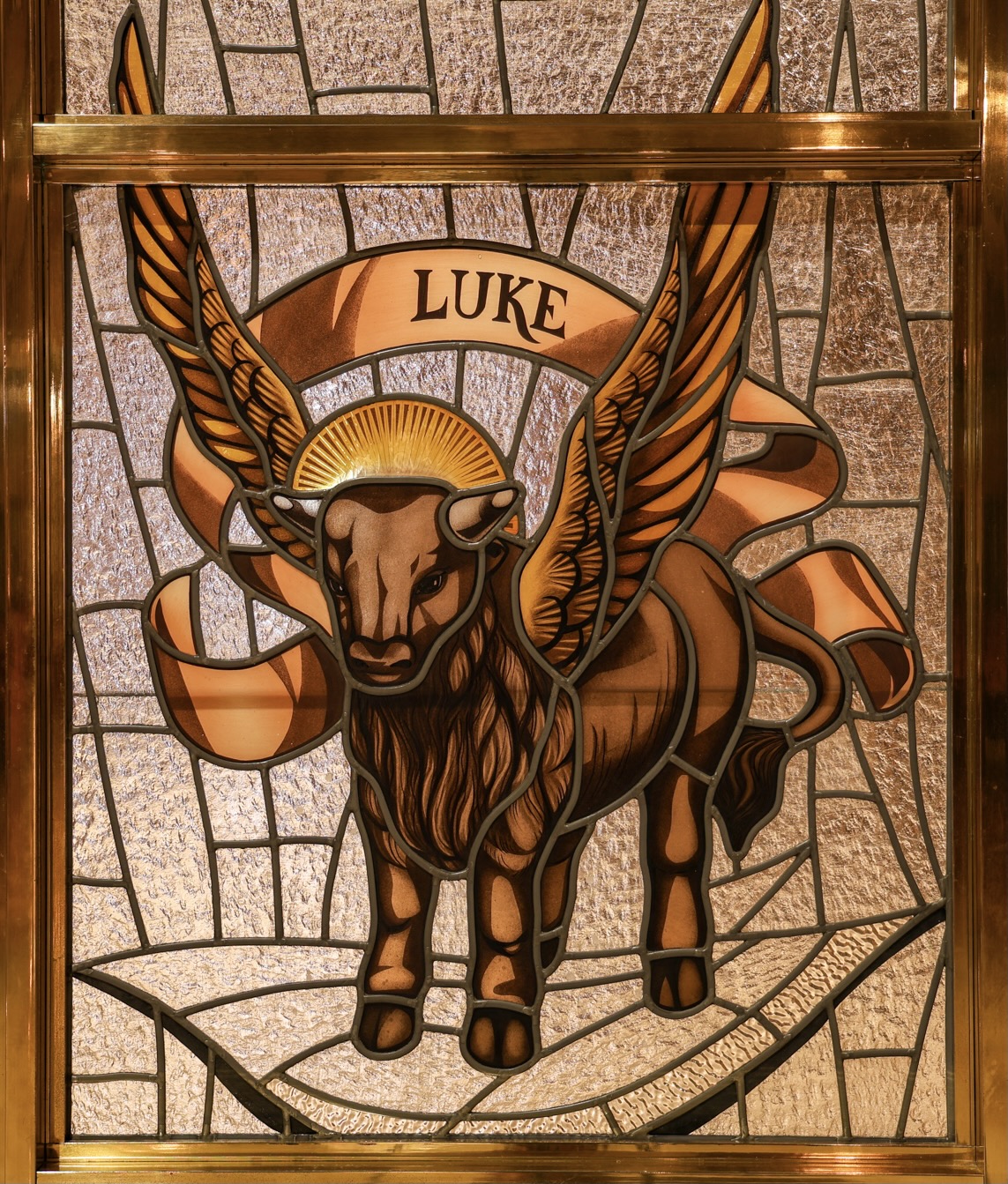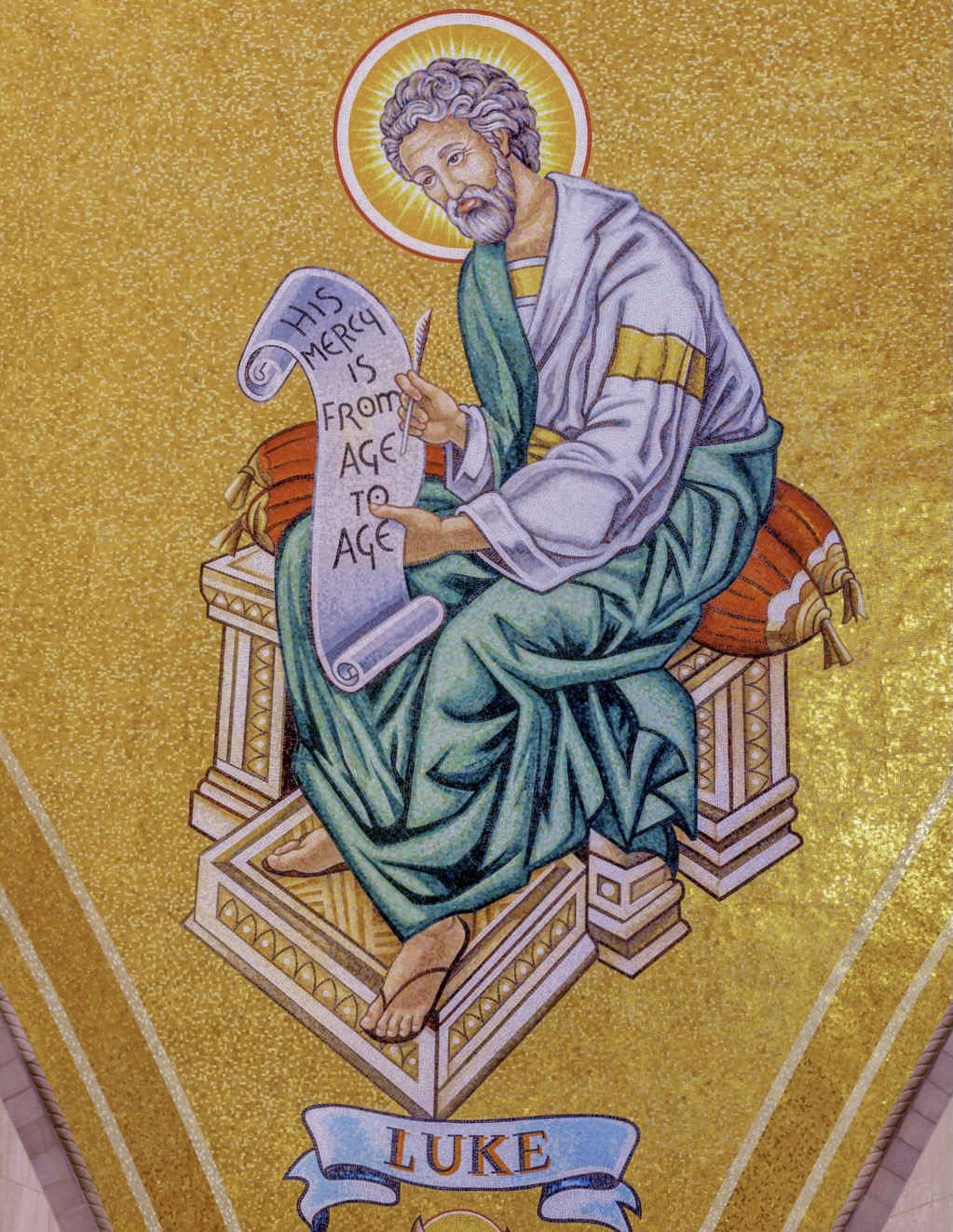Did you know that St. Luke is honored in ten different places in the Basilica? Although he was not an eyewitness to Jesus’ earthly ministry, he investigated the details of Jesus’ life before writing it down for a fellow Christian named Theophilus, so that he might “know the certainty of the things [he had] been taught” (Luke 1:1-4). While little is known about his personal life, it is clear that Luke was a faithful follower of Jesus and friend of the apostle Paul, who sought to spread the Gospel message.
As we celebrate the feast of St. Luke the Evangelist on October 18, we invite you to discover five facts about this Gospel author.
1. Luke was a disciple of Paul and was with him during his imprisonment.

In the second letter to Timothy, which Paul wrote during a time of imprisonment, he shared that although his other friends had left Rome, Luke was still there, serving faithfully. 2 Timothy 4:9-11 says:
“Try to join me soon, for Demas, enamored of the present world, deserted me and went to Thessalonica, Crescens to Galatia, and Titus to Dalmatia. Luke is the only one with me. Get Mark and bring him with you, for he is helpful to me in the ministry.”
2. Luke is believed to be the only Gentile Gospel author.
It is believed that Luke originally resided in the city of Antioch and was Greek. In Chapter 4 of his book of Church History, Eusebius Pamphili, (circa 260-341), Bishop of Cæsarea in Palestine, stated:
“Luke, who was of Antiochian parentage and a physician by profession, and who was especially intimate with Paul and well acquainted with the rest of the apostles, has left us, in two inspired books [the Gospel of Luke and the book of Acts], proofs of that spiritual healing art which he learned from them.”
Additionally, certain literary clues within the Bible, such as the fact that Luke had a “much better grammatical grasp of the Greek language than any of the other Evangelists” also support the belief that he was of Greek lineage.
The other three Gospel authors were all Jews. Matthew and John were two of Jesus’ 12 disciples and were originally from Galilee (see Matthew 9 and Luke 5), and Mark, whose mother dwelt in Jerusalem (Acts 12:12), served alongside Paul and Barnabas, and was also Barnabas’ cousin (see Colossians 4:10).

3. Paul mentions Luke multiple times in his epistles.
There are several instances where Paul’s writings mention Luke accompanying him in his ministry, including in Colossians 4:14, Philemon 1:23-24, and in 2 Timothy 4:9-11.
4. Luke was a physician.
In Colossians 4:14, Paul refers to Luke as “the beloved physician.” Because of his background, Luke includes many significant stories of healing in his Gospel. We see Christ’s healing power displayed in the account of the man with the withered hand, as well as the woman with an issue of blood, who merely touched Christ’s robe and was healed. There is also the story of the crippled man, who was so desperate for healing that his friends lowered him through a hole in the roof to see Christ. Today, Luke is recognized as the patron saint of physicians.
5. Luke is the author of the largest portion of the New Testament.

Throughout his writing, Luke demonstrates a unique skill for storytelling. Not only are his accounts historically accurate, but they also draw the reader in with their rich emotion and well-established characters. His account of the Nativity is perhaps the most well-known account of Christ’s birth. Other significant stories unique to Luke include the parables of the Prodigal Son and the Good Samaritan, Gabriel’s appearance to Mary, and the subsequent Magnificat; Christ as a child in the temple – one of the few hints we have about Christ’s childhood; and the story of Zacchaeus, the repentant tax collector.
Luke’s Gospel narrative paints the details of Christ’s life in vivid detail, giving readers throughout the ages a real sense of what Christ’s ministry was like.
At the Basilica, St. Luke is honored in various places, including in stained glass in the St. Joseph Chapel, the Our Lady of Lebanon Chapel, the Mother of Africa Chapel, an icon in the Byzantine Ruthenian Chapel, a rondel in the Our Lady of Czestochowa Chapel, the Our Mother of Perpetual Help Chapel, the Southwest Pendentive of the Trinity Dome, the Triumph of the Lamb Dome mosaic, the Crypt Church Sacristy Doors, and in the ceiling tiles of the Crypt Church.

